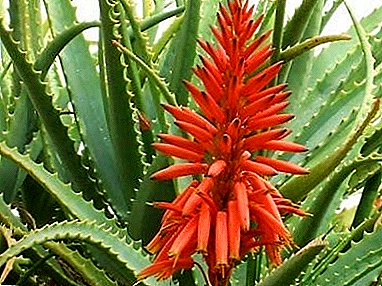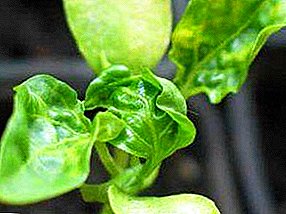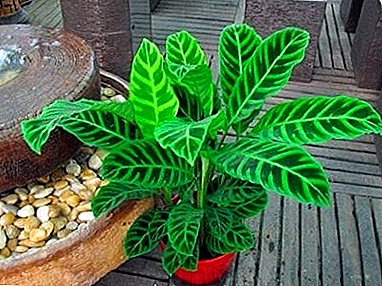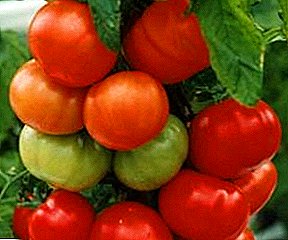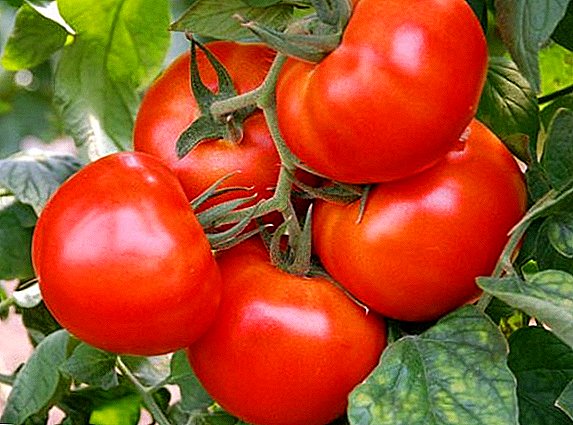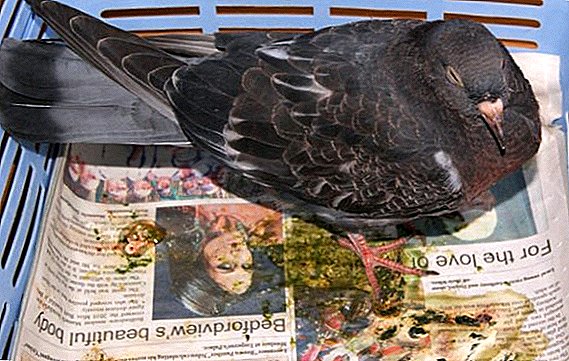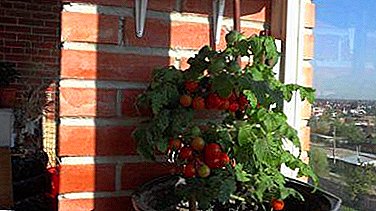
Regularly using organic tomatoes grown by yourself is not at all difficult, even if there is no land for their cultivation. It is quite possible to plant tomatoes on the windowsill, for this it is only worth observing some points.
This article will tell you whether it is possible to grow tomatoes on a window at home, how to choose a tomato variety, a place, how to plant tomatoes, seedlings and seeds, how to water and fertilize, cut and pinch, and what diseases and pests can threaten indoor tomatoes.
Can I plant tomatoes on the growing window at home?
Selection work is ongoing and their result has been a lot of hybrid varieties of tomatoes, suitable for growing in a flower pot. They are distinguished by unpretentiousness and yield.
A huge advantage of such cultivation is year-round, knowing the time of ripening, you can easily get a crop just in time for the New Year's table. The main thing - to choose the right grade.
The disadvantages of such tomato cultivation can be attributed perhaps to the limited plantings, especially if the window sills in the apartment are not wide and, of course, home yields will differ in size from those harvested from open ground plants.
Preparatory activities: growing properly
How to choose a place?
No matter which side goes out the window, you can still get the harvest. Hybrids, intended for cultivation on window sills, are adapted to a short day of light and a lack of sunlight.
Tomato is a heat-loving plant, so the temperature near the bushes should be maintained at + 22-25 degrees during the day and not lower than +15 degrees in the evening. Also demanding tomatoes to humidity. Especially with the winter variant of cultivation, when the radiators of the heating dry up the air very much, which can cause a disease of the plant. Indoor air should be regularly humidified.
Special varieties
For beds on the window, standard and ampelous varieties are suitable.. Such plants in height do not exceed 35-45 centimeters. Top options:
Micron NC

Refers to dwarf varieties, does not grow above fifteen centimeters. The fruits are sweet - yellow or red, weighing no more than twelve grams. The state of health of the plant is completely independent of the length of daylight.
Pinocchio

Bush is compact, fruits are sweet, round, weighing twenty grams. If you sow the seeds after the twentieth of September, the first harvest can be harvested by the New Year.
Snow bull

Ultra early variety, compact stem plant, 30-40 cm tall. Not a stakeon, fruits are red, round.
Pot
For the cultivation of miniature tomatoes is quite suitable ordinary flower potmade of plastic. Choosing the diameter you need to focus on the size of an adult plant.
Priming
For planting potted tomatoes suitable as a ready store substrate, and soil mixture, cooked yourself. This will require:
- humus - 50%;
- Chernozem - 45%;
- sand - 5%;
How to plant at home: technology from A to Z
Seeds
- Planting material is best purchased in the store to be confident in its quality and compliance with the stated characteristics.
- Before planting, it is necessary to sort the empty kernels that are not capable of sprouting. To do this, they need to be lowered into salt water for ten minutes and substandard seeds will float, while healthy ones will sink to the bottom.
- Next, the seeds are soaked for half an hour in a solution of potassium permanganate to develop immunity to late blight in future plants.
- After all procedures, the seeds are placed in a damp cloth.
- After the sprouts appeared, the seeds are sown in the ground, deepening an inch, observing an interval of three centimeters.
- The soil is lightly tamped down, the container is covered with plastic wrap and cleaned in a warm place until germination. In the film you need to make small holes for air circulation.
- In a week, shoots will appear. It is necessary to ensure that the soil was always moderately moist.
Seedlings
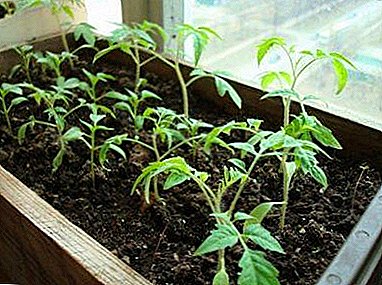 Seedlings of tomatoes dive in the phase of two true leaves.
Seedlings of tomatoes dive in the phase of two true leaves.- To make them easy to separate without damage, watering is stopped two days before the procedure.
- Carefully prying a sprout with a spatula along with an earthy clod, it is transferred to a new container with soil so that the stem is completely in the ground.
- The soil is slightly compacted and shed with warm water.
- In a month, during which the seedlings need to be fed with mineral fertilizer, the grown seedlings are transplanted to a permanent place by the method of transshipment.
- Dwarf plants can be planted one by one in separate pots.
- After the landing, it is necessary to maintain the temperature of +18 +20 degrees and prevent exposure to direct sunlight.
Step-by-step instructions for the care of room culture
Watering and fertilizer
Potted tomatoes are very grateful for irrigation. Moisturizing the soil contributes to healthy growth, friendly formation of ovaries and ripening fruits. Watering is carried out twice a week, without touching the stems. By the beginning of flowering, watering is stopped and resumed only with the appearance of ovaries.
Three weeks after the pick was taken, special mineral fertilizers are applied for the first time. Feed the tomatoes need at intervals of two weeks, making fertilizer on the second day after watering.
Trimming and pinching, pasynkovanie
Be sure to remove the shootsformed in the axils of the leaves, that is, pasynkovanie. It is necessary for the proper formation of the plant. Not deleted in time, the stepsons lead to thickening, take nutrients and reduce the yield of tomatoes.
Reference! After the main ovaries have formed, you need to pinch the top, and cut off the lower leaves, which have withered in the process of growth.
Props, hanging
The varieties suitable for cultivation on the windowsill, there is no branching, they have a stable trunk, so they do not need a garter. If, however, such a need has arisen, then a peg is stuck in the ground carefully, in order not to damage the roots, and the branches are attached to it.
Diseases and pests
- Late blight - fungal disease transmitted by air, soil, through seeds and plant residues. Symptoms - dark brown spots on the leaves, with time passing on the stems and fruits. Able to completely destroy the crop. For prophylaxis, a method of soaking seeds in potassium permanganate is used at the germination stage, it is also possible to treat young plants with Bordeaux liquid.
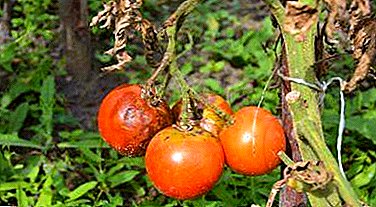 Blackleg - A fungal disease caused by planting thickening and lack of light. The base of the stem turns black, the plants are deformed, fall and die. For preventive purposes, the soil is enriched with ash and sand. If the disease is already in the active stage, they are treated with fungicidal preparations.
Blackleg - A fungal disease caused by planting thickening and lack of light. The base of the stem turns black, the plants are deformed, fall and die. For preventive purposes, the soil is enriched with ash and sand. If the disease is already in the active stage, they are treated with fungicidal preparations.- Septoria- infection occurs through the soil. The lower leaves of the plant are covered with greyish spots with black dots, then the leaves turn brown and dry. Prevention - decontamination of soil with potassium permanganate, the affected parts are destroyed, and treatment is carried out using bordeaux treatment.
- Brown spot - light brown spots on the leaves, the cause of which is increased humidity and gulf soil. Treatment is similar to septoria.
- White fly - a small insect sucking on a leaf and resembling scales. Represents a threat as a carrier of disease. Adding a sufficient amount of nutrients will contribute to resistance, and the insects that have already appeared and their larvae can be washed off the leaves with soapy water or dandelion infusion.
- Thrips - insects, traces of life which manifest themselves in the form of dry, falling leaves and dried buds. The fight consists of sufficient watering and treatment with insecticides.
Growing tomatoes on the windowsill is an opportunity to harvest the fruits of fragrant fruits, not only in spring or summer, but all year round. This is an exciting activity that brings great pleasure even to those who have previously considered themselves far from the theme of gardening. After reading the article, you learned when to plant tomatoes and what varieties to choose for a bountiful harvest.


 Seedlings of tomatoes dive in the phase of two true leaves.
Seedlings of tomatoes dive in the phase of two true leaves. Blackleg - A fungal disease caused by planting thickening and lack of light. The base of the stem turns black, the plants are deformed, fall and die. For preventive purposes, the soil is enriched with ash and sand. If the disease is already in the active stage, they are treated with fungicidal preparations.
Blackleg - A fungal disease caused by planting thickening and lack of light. The base of the stem turns black, the plants are deformed, fall and die. For preventive purposes, the soil is enriched with ash and sand. If the disease is already in the active stage, they are treated with fungicidal preparations.